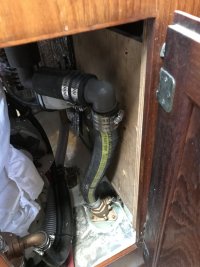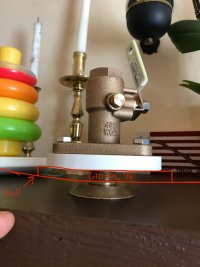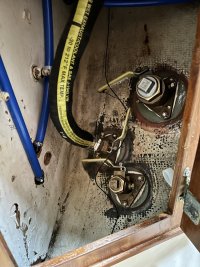Chris "Tako" Green
Member II
1974 Ericson 35-II
Preparing for my first haul out for the bottom paint and I thought this was a good opportunity to get rid of these thru-hulls with wood backing blocks. I talked to my yard and its $1000 per hole to do the work. I planned on replacing like 5 thru-hulls but $5000 for this job is not what I wanted.
The real question. If the job was just to remove the original thru-hull, add a "plastic" backing plate and tighten, obviously using maybe 5200 I would feel fairly confident in doing this, and then just spinning on a new bronze in-line ball valve by Groco.
I have read that the only way to do this job anymore is to use a seacock which requires drilling through the backing plate, the hull and bolts to the outside of the vessel. I get this is a much more secure install but is the first method wrong or dangerous? Its whats in my boat now and seems to have held for 40 years.
Thanks in advance for any answers!
Preparing for my first haul out for the bottom paint and I thought this was a good opportunity to get rid of these thru-hulls with wood backing blocks. I talked to my yard and its $1000 per hole to do the work. I planned on replacing like 5 thru-hulls but $5000 for this job is not what I wanted.
The real question. If the job was just to remove the original thru-hull, add a "plastic" backing plate and tighten, obviously using maybe 5200 I would feel fairly confident in doing this, and then just spinning on a new bronze in-line ball valve by Groco.
I have read that the only way to do this job anymore is to use a seacock which requires drilling through the backing plate, the hull and bolts to the outside of the vessel. I get this is a much more secure install but is the first method wrong or dangerous? Its whats in my boat now and seems to have held for 40 years.
Thanks in advance for any answers!



